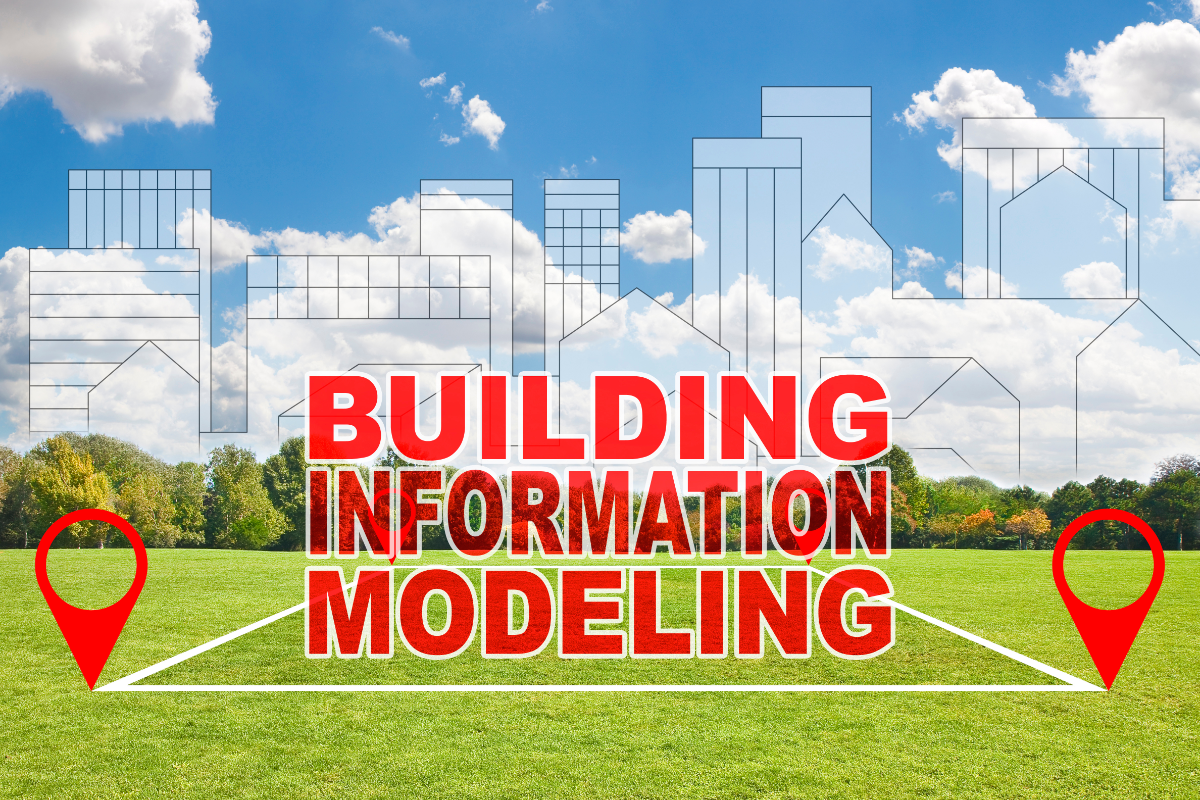In the rapidly evolving world of construction and architecture, efficiency and collaboration are more critical than ever. Building Information Modeling (BIM) has emerged as a game-changing technology that transforms how projects are planned, designed, and executed. At its core, BIM is a digital representation of the physical and functional characteristics of a building. It serves as a centralized database that integrates data, 3D models, and workflows, allowing stakeholders to collaborate seamlessly throughout the entire project lifecycle.
Understanding BIM is essential for professionals in the construction industry, as it offers numerous advantages over traditional planning methods. By utilizing BIM, teams can visualize the project in its entirety before breaking ground, anticipate potential challenges, and make informed decisions that enhance efficiency and reduce costs. From architects and engineers to contractors and project managers, all participants benefit from improved communication and transparency that BIM provides.
The importance of construction planning in modern architecture cannot be overstated. A well-structured plan lays the groundwork for successful project execution, ensuring that timelines are met and budgets are adhered to. In an era where sustainability and resource optimization are paramount, BIM enables a more thoughtful approach to construction planning. It allows teams to simulate various scenarios, evaluate materials, and assess environmental impacts, ultimately leading to more sustainable building practices.
As the construction industry embraces digital transformation, understanding and implementing BIM in construction planning is no longer optional; it is a necessity. This article will explore the benefits of BIM, the phases of its implementation, best practices for effective planning, and the challenges that may arise. By delving into the world of BIM, professionals can position themselves to thrive in an increasingly competitive landscape and contribute to the future of construction.
Key Benefits of Using BIM for Construction Planning
Building Information Modeling (BIM) offers a range of significant benefits that enhance construction planning and execution. First and foremost, it promotes collaboration among all stakeholders involved in a project. With BIM, architects, engineers, contractors, and clients can work together on a shared platform, ensuring everyone has access to the most current data. This collaborative approach minimizes miscommunication and reduces the likelihood of costly errors.
Additionally, BIM improves visualization and helps identify potential issues early in the project lifecycle. By creating a 3D model of the building, stakeholders can visualize how different elements will interact, allowing for more informed decision-making. This proactive problem-solving capability can lead to time and cost savings, as changes can be made virtually before they become physically expensive.
BIM also enhances project efficiency through better resource management. By using BIM’s data-driven insights, teams can optimize scheduling, allocate resources effectively, and monitor project progress in real-time. This streamlined approach ensures that projects are completed on time and within budget.
The Phases of BIM Implementation in Construction Projects
BIM implementation in construction projects typically unfolds across several key phases, each playing a crucial role in ensuring the success of the overall process.
2.1 Pre-Construction: Setting the Foundation with BIM
In the pre-construction phase, BIM serves as a foundational tool for planning and analysis. This stage involves gathering all necessary data related to the site, local regulations, and client requirements. By creating preliminary models, project teams can assess feasibility, conduct site analysis, and perform risk assessments early on. This thorough groundwork lays the foundation for a smooth transition into the design phase.
2.2 Design Phase: Creating a Collaborative Environment
During the design phase, BIM fosters a collaborative environment where architects and engineers can work together to develop detailed plans. The software allows for real-time updates and modifications, enabling teams to experiment with different design elements and quickly visualize the impacts of those changes. Moreover, BIM enhances coordination by integrating structural, mechanical, and electrical systems into a single model, reducing the chances of conflicts during construction.
2.3 Construction Phase: Managing Resources and Workflow
In the construction phase, BIM becomes a vital tool for managing resources and workflows. It allows project managers to create detailed construction schedules, track material deliveries, and coordinate subcontractors effectively. Additionally, the model can be used for on-site inspections and quality control, ensuring that construction aligns with the design intent. By leveraging BIM during this phase, teams can adapt to challenges in real-time, improving overall project efficiency.
2.4 Post-Construction: Utilizing BIM for Facility Management
After construction is complete, BIM continues to provide value through facility management. The as-built model serves as a comprehensive reference for building operators and maintenance teams. They can use the model to access vital information about building systems, maintenance schedules, and equipment specifications. This ongoing relationship between BIM and facility management enhances operational efficiency and supports long-term sustainability.
Best Practices for Effective BIM-Based Planning
To maximize the benefits of BIM in construction planning, several best practices should be followed:
- Stakeholder Engagement: Involve all relevant parties early in the BIM process to ensure alignment and buy-in. Regular communication is key to maintaining collaboration.
- Standardization: Establish standardized protocols for BIM processes, including naming conventions and file structures, to streamline collaboration and reduce confusion.
- Training and Development: Invest in training for team members to ensure they are proficient in using BIM tools and understand its capabilities. Continuous learning is essential as technology evolves.
- Data Management: Implement robust data management strategies to ensure that all project data is accurate, up-to-date, and easily accessible to stakeholders.
- Iterative Review: Conduct regular reviews of the BIM model throughout the project lifecycle to identify and address issues as they arise. This iterative process supports continuous improvement.
Challenges and Solutions in BIM Implementation
While BIM offers many advantages, its implementation can also present challenges. Some common issues include:
- Resistance to Change: Stakeholders may be hesitant to adopt new technologies. To overcome this, emphasize the benefits of BIM through training sessions and success stories.
- Interoperability Issues: Different software platforms may struggle to communicate with one another. Establishing clear standards and using compatible tools can help mitigate this issue.
- High Initial Costs: The investment in BIM technology can be substantial. However, demonstrating the long-term cost savings and efficiency improvements can justify the initial expense.
Case Studies: Successful BIM-Driven Construction Projects
Several high-profile construction projects have successfully utilized BIM to achieve remarkable outcomes. For instance, the One World Trade Center in New York City leveraged BIM to coordinate the complex design and construction processes, resulting in improved safety and efficiency. The Sydney Opera House renovation project also adopted BIM to streamline communication among diverse teams and ensure adherence to timelines and budgets.
These case studies highlight the transformative impact of BIM on project delivery, showcasing how organizations can achieve their goals through innovative technology.
Future Trends in BIM and Construction Planning
As the construction industry continues to evolve, several trends are shaping the future of BIM:
- Increased Integration of AI and Machine Learning: These technologies will enhance predictive analytics, allowing for better risk assessment and decision-making.
- Cloud-Based BIM Solutions: Cloud technology enables real-time collaboration and data sharing, making it easier for distributed teams to work together effectively.
- Sustainability Focus: As environmental concerns grow, BIM will increasingly be used to assess and optimize the sustainability of building designs and construction practices.
- Virtual and Augmented Reality: These immersive technologies will complement BIM by allowing stakeholders to experience designs in a virtual environment, facilitating better understanding and feedback.
By staying informed about these trends and adapting to the changing landscape, construction professionals can harness the full potential of BIM to drive innovation and efficiency in their projects.
The role of Building Information Modeling (BIM) in shaping the future of construction planning is becoming increasingly significant as the industry embraces digital transformation. As highlighted throughout this article, BIM provides a powerful framework for improving collaboration, enhancing visualization, and optimizing resource management across all stages of a construction project. By integrating data and facilitating real-time communication among stakeholders, BIM not only streamlines workflows but also significantly reduces the risk of errors and miscommunication.
As the construction landscape evolves, so too does the need for more efficient and sustainable practices. BIM stands at the forefront of this change, offering tools that allow teams to analyze and simulate various scenarios, ultimately leading to smarter decisions that prioritize both time and cost efficiency. Moreover, the post-construction benefits of BIM—such as improved facility management and maintenance—underscore its value beyond the initial build phase, enabling long-term operational success.
The future of construction planning will increasingly rely on the continued advancement of BIM technologies. As we see greater integration with artificial intelligence, cloud computing, and immersive technologies like virtual and augmented reality, the potential for innovation is vast. These developments will not only enhance how projects are designed and executed but also redefine what is possible in terms of sustainability and efficiency in the built environment.
In conclusion, embracing BIM is no longer a choice but a necessity for construction professionals looking to remain competitive and responsive to the demands of modern projects. By investing in BIM and fostering a culture of collaboration and continuous learning, the construction industry can effectively navigate the complexities of today’s projects while laying the groundwork for a more innovative and sustainable future. The journey toward a more efficient and collaborative construction environment starts with the adoption of BIM, making it an essential tool for any organization aiming to thrive in the years to come.


